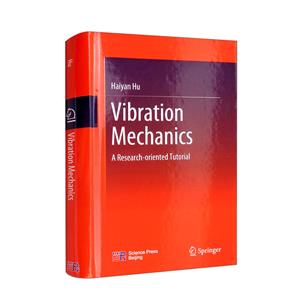-
>
宇宙、量子和人类心灵
-
>
气候文明史
-
>
南极100天
-
>
考研数学专题练1200题
-
>
希格斯:“上帝粒子”的发明与发现
-
>
神农架叠层石:10多亿年前远古海洋微生物建造的大堡礁
-
>
声音简史
Vibration mechanics:a research-oriented tutorial 版权信息
- ISBN:9787030698322
- 条形码:9787030698322 ; 978-7-03-069832-2
- 装帧:一般胶版纸
- 册数:暂无
- 重量:暂无
- 所属分类:>
Vibration mechanics:a research-oriented tutorial 内容简介
《振动力学:研究性教程(英文版)》共分7章:首章基于研究型学习需求,提出6个研究案例和12个科学问题作为学习全书的引导;第2章从美学角度回顾振动力学基础教程的主要理论和方法,为学习后续章节提供富有哲理的思想方法;此后几章分别讨论振动系统的模型、离散系统的振动、一维结构的固有振动、对称结构的固有振动、一维结构的波动与振动等问题,构成一个关于线性振动和波动的研究性教程框架,解决第1章所提出的12个科学问题。 《振动力学:研究性教程(英文版)》体系新颖,内容来自作者长期从事人才培养、学术研究和工程咨询的经验和体会,具有学术深度;可激发读者开展以问题为导向的研究型学习,在学习和研究中实现对振动力学认知的螺旋式上升。 《振动力学:研究性教程(英文版)》是振动力学基础教程的续篇,可供力学、航空、航天、机械、动力、交通、土木工程等专业高年级本科生和研究生作为研究型学习的教程。
Vibration mechanics:a research-oriented tutorial 目录
- >
诗经-先民的歌唱
诗经-先民的歌唱
¥14.5¥39.8 - >
名家带你读鲁迅:故事新编
名家带你读鲁迅:故事新编
¥13.0¥26.0 - >
回忆爱玛侬
回忆爱玛侬
¥24.0¥32.8 - >
莉莉和章鱼
莉莉和章鱼
¥14.4¥42.0 - >
【精装绘本】画给孩子的中国神话
【精装绘本】画给孩子的中国神话
¥18.6¥55.0 - >
李白与唐代文化
李白与唐代文化
¥9.9¥29.8 - >
二体千字文
二体千字文
¥14.0¥40.0 - >
新文学天穹两巨星--鲁迅与胡适/红烛学术丛书(红烛学术丛书)
新文学天穹两巨星--鲁迅与胡适/红烛学术丛书(红烛学术丛书)
¥9.9¥23.0
-
世纪幽灵-走近量子纠缠
¥9.4¥28 -
大学物理简明教程·第4版
¥34.6¥56 -
物理学之美-插图珍藏版
¥29¥69 -
一代神话:哥本哈根学派
¥7.2¥15.5 -
现代炼金术的兴起:卡文迪什学派
¥7.4¥16.8 -
核科学基本原理
¥15.7¥39.8
学前儿童科学教育活动设计与指导
¥25.1¥35.0卡尔·克劳传 : 一个老中国通的上海往事
¥49.4¥78.0清朝疆域(1820年)历史学习用速查速记
¥3.2¥5.0

















